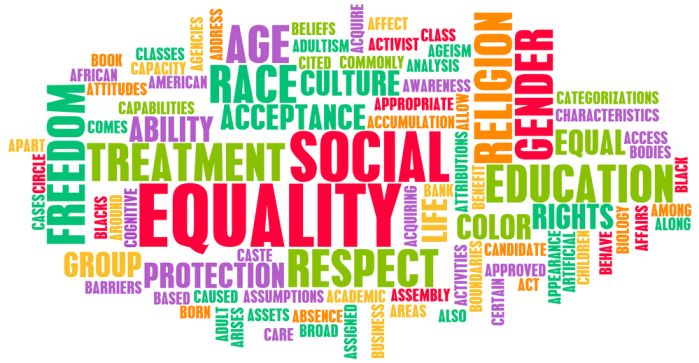What is diversity in the workplace and what does it look like?
Diversity is the variety of different people, cultures, values, and ideas. It is the world’s natural wonder! What’s more is that diversity in the workplace is not just about gender or ethnicity anymore. It includes diversity in thoughts, backgrounds, skillsets, and perspectives.
A diverse workplace embraces all of these elements to bring together a diverse workplace that’s empowered to drive better business outcomes and personal growth.
Changing Diversity in the Workplace: Challenging & Rewarding
Many people shy away from this because they don’t know where or how to get started. An organisation may have tried and failed before to implement diversity initiatives. They might decide it doesn’t work, or the benefits are not worth the effort.
There will always not be demand for inclusive workplaces. In Australia, 40% of the population are born overseas and will soon be joining the workforce. It’s a great time to get started, but it is important to change if you have failed in the past.
These are eight ways you can start challenging and changing your employer towards a more inclusive environment. One that is worthy of being proud of.
1. Processes for recruitment
Diversity and equity are key components of your recruitment efforts. Make sure you’re looking for talent from all backgrounds. Do not create unnecessary barriers for entry to the hiring process by requiring advanced degrees, expensive certifications, or experience with specific firms. Poor English should not be a barrier. We must know that 40% of all Australians were born overseas. These migrants and refugees have amazing skills and training and experience, which is what Australia has built on over the past 200 years.
Your employer must reiterate its commitment to inclusive recruitment. Interviews should reflect diversity both among current employees and potential employees. Employees who have been or filed for Workcover are often viewed as lazy, complainers, or a liability. This subconscious belief that only fit, white, young men are eligible for Workcover must be abandoned.
2. Groups of employees
Your employees are complete people and bring their whole selves to work every day. It is not unusual to spend more time at work then with your spouse, husband, or partner. It can be difficult to separate your work and home lives. The fact that you are expected to be available 24 hours a days doesn’t help. It is important to provide spaces for employees where they can meet with others of the same background, ethnicity, or who have similar interests. This will ensure that everyone feels included and represented at work. These adjustments, which don’t cost anything, show inclusiveness and respect.
3. Be an example
In more ways than one, leaders set the pace for companies. Inclusive leadership groups are more effective at making decisions and a strong reminder to the company’s values. People from low-income backgrounds worry about their ability to advance in their careers (the ever-present glass ceiling), so it is important to find someone who can relate to them and reassure them that they will be able to thrive at the company. They have a chance to succeed, not despair.
4. Always be upfront and honest with your approach
Do not try to create diversity by yourself. Your efforts should be transparent, and you should ask for the help of your team. One person cannot see everything or fix it all. You might consider putting in place regular meetings and feedback devices so that your team can share what they see and what needs improvement. Also, they can discuss any concerns in a neutral environment. Follow up by acknowledging their concerns and making meaningful changes.
5. Community Engagement (both within and outside the Company).
Companies can’t be as socially responsible as they once were. This is evident with climate change. It’s easy to lose trust in your employees by making statements that aren’t consistent with their daily lives. Adopt a zero-tolerance policy against discrimination, racism, sexism and harassment. These issues are not restricted to particular interest groups. (This special interest group seems to have in via lobbying groups). Creating an environment where people feel safe, valued, and respected is a way of standing up for your rights.
6. Open your eyes, let it all be seen
Diversity in groups and diversity means diversity of thought. Ask employees to participate in the discussion, particularly if they have never spoken up before. It is difficult for people to voice their opinions when the conversation becomes too homogeneous. Discuss the pros and cons for your ideas. This will show that you care about the best idea and not the most popular. You are open to listening to everyone, without any fear about who or what you are.
7. Do your research
You can share the benefits of diversity and your colleagues with others. Share stories and put the benefits forward in a concise way. It is important to ensure that evidence-based decisions are made where possible. While looking at the positives can be a good thing, we have a tendency to see the negatives and want to destroy people’s ideas. There is still research on the benefits of having a diverse workforce. Employees are more satisfied, feel valued and included, which is a benefit that can be seen across the board. Trust is built within organizations when there is inclusion.
8. Stories about Equity and Diversity
Diversity and equity in the workplace. I will tell you a story about a Friday night 18 years ago. I was going out and I didn’t drink so I hired a Taxi. During this ride I asked him three times to stop at a bottle store. He refused.
His religious beliefs made it obvious. I was frustrated and asked him how many Christian friends he had. I asked him to count the number of Muslim friends I had. He said no. I replied that neither of us had crossed the line. This story is something I have told to many people in the workplace over the years. It shows the great divide and the lack of diversity among my friends. This was a conscious decision that I made.
The team at A Whole New Approach have a diverse work force. It’s not difficult, and it fits with the “a fair get mate” that we Australians are proud of. To this day, I am still friends with the taxi driver.
Stand out, be different!

Conclusion: Equity and Diversity in the Workplace
Equity and diversity in the workplace is more than a conversation between two people. Every person has something that makes them unique. It’s what makes us different and makes the world better. It would be boring to be the same, let’s face it. Management must recognize and use employees’ strengths to get the best from them. Employers shouldn’t have to spend a lot of money to make this happen. We all bring our unique strengths to the workplace, regardless of whether it is our educational backgrounds, perspectives, and ways of thinking. An inclusive employer is one that encourages innovation, social change, and community engagement.
Need Support?
If your employer has taken adverse action against you or you have been discriminated against because of your race, colur, disability or cultural background, get in touch with our team today. Below are some pages of reference to consider.











